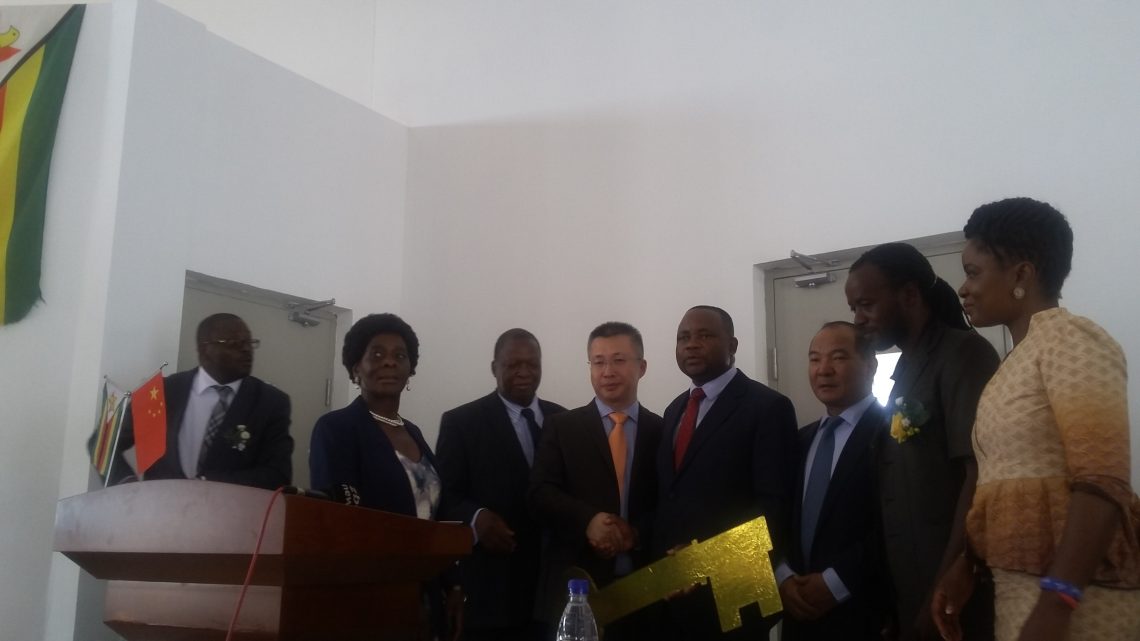By Byron Mutingwende
In a quest to improve the quality of education and consolidate Zimbabwe’s status as the leading country on literacy levels in Africa, a Cabinet minister has proffered a cocktail of measures to improve the sector.
Speaking during the official handover of the Zimbabwe-China Friendship High School in Harare on Thursday 21 December 2017, Prof Paul Mavima, the Minister of Primary and Secondary Education said the quality of education is compromised and there was a need to prioritise the provision of quality infrastructure as one way of improving it.
“The provision of quality infrastructure, together with building the legislative framework, implementing teacher professional standards, instituting a strong research institution and programme and continuously developing the capacities of our teachers, form the five pillars that support the implementation of our new curriculum.
“We realise that due to limited fiscal space, government cannot accomplish this feat of developing infrastructure alone. It is for this reason that we will forever be grateful to the Republic of China for this and other school donations that they have accorded to us a Government and People of the Republic of Zimbabwe,” Prof Mavima said.
He said the ministry is employing a variety of measures to expedite the delivery of schools infrastructure. In that regard, 17 schools will be built throughout the country starting in January 2018, under the $20 million OFID facility.
“The Ministry will commence the implementation of the pilot joint venture programme that will deliver 100 new schools and 66 laboratories at the existing schools. It is also working with the Infrastructure Development Bank of Zimbabwe (IDBZ) financial and transaction advisers and the process is progressing with speed, “Mavima said.
Zhao Baogang, The Chinese Charge De Affairs said the Zimbabwean government attaches great importance to education as evidenced by more than 95% of the population that is literate.
“China will support education in its contribution to the development of Zimbabwe. It’s a miracle out of hard work and students will have a bright future to become politicians, economists and technicians. We fought together therefore we must work together in developing the country,” Baogang said.
Zhang Baochany, the Project Manager of the China State Construction Engineering Corporation said the high school includes three teaching building blocks, three laboratories, one administration building block, one multi-functional hall, one accessory building, main and second guard rooms and one stadium which includes three basketball courts and one football field.
The project started in May 2016 with the ground breaking ceremony at which the former minister of education Dr. Lazarus Dokora laid the official corner- stone at the site which was a bare ground by then.
The school will be officially opened next year and will accommodate 960 students and 50 teachers, with a guaranteed conducive learning environment for the students.
Petronella Kagonye, the minister of labour and social welfare said the school was built in such a way that it would accommodate students of different abilities.
“We are grateful that the school was built in such a way that it will be accessible to students with disabilities. There are staircases and ramps as well as ablution facilities tailor-made for persons with disabilities. This is in line with the SDGs, which emphasise on leaving no one behind.
Tongesai Madambo, the Member of the House of Assembly for Harare North Constituency said the school would go a long way in addressing the shortages of learning facilities in the area. He appealed to the government, development partners and the corporate world to work together in building more schools to accommodate the growing population of students in the area.
Charlene Chiveso, a resident of Hatcliffe Extension in which the school was constructed said the development could not have come at a better time.
“Our children travel long distances to school. We are happy that the high school has been built in our locality and will accommodate nearly a thousand students. We appeal to authorities to give first priority to our children because they have suffered for long. We expect that the school will churn out competent students who will be our future leaders,” Chiveso said.
